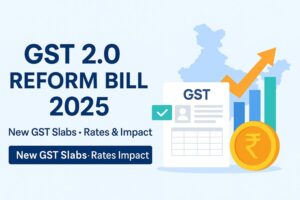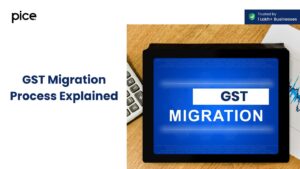Rounding Off Tax Under GST Rules Explained
- 12 Nov 25
- 7 mins
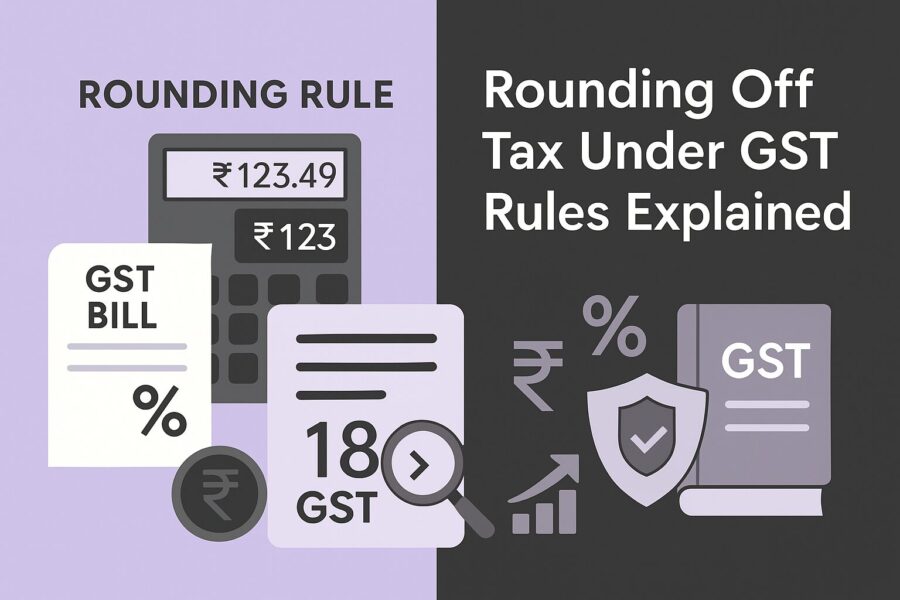
Rounding Off Tax Under GST Rules Explained
Key Takeaways
- Section 170 of the CGST Act mandates rounding off tax values to ensure accuracy and compliance in every GST invoice.
- The normal rounding method—rounding up from ₹0.50 and down below ₹0.50—is the legally accepted GST rounding rule in India.
- Rounding off applies to each invoice and all GST components, including CGST, SGST, and IGST, not just the total tax amount.
- Using consistent rounding methods helps businesses avoid calculation errors, penalties, and compliance discrepancies under GST.
- Accurate rounding off of GST values improves financial transparency, simplifies accounting, and boosts overall tax compliance efficiency.
Have you ever wondered how a small decimal on your GST invoice could silently affect your business’s bottom line? Rounding off tax under GST may seem minor, but it plays a significant role in ensuring accurate reporting and compliance under GST. In fact, a Times of India report reveals that 68% of Indian businesses struggle with GST-readiness, often due to unclear rules like Section 170 of the Goods and Services Tax Act.
This blog breaks down the concept of rounding off tax, what it means, why it matters, and how mastering it can prevent costly errors and improve your compliance score. So, let us decode it together!
GST Rounding Rules
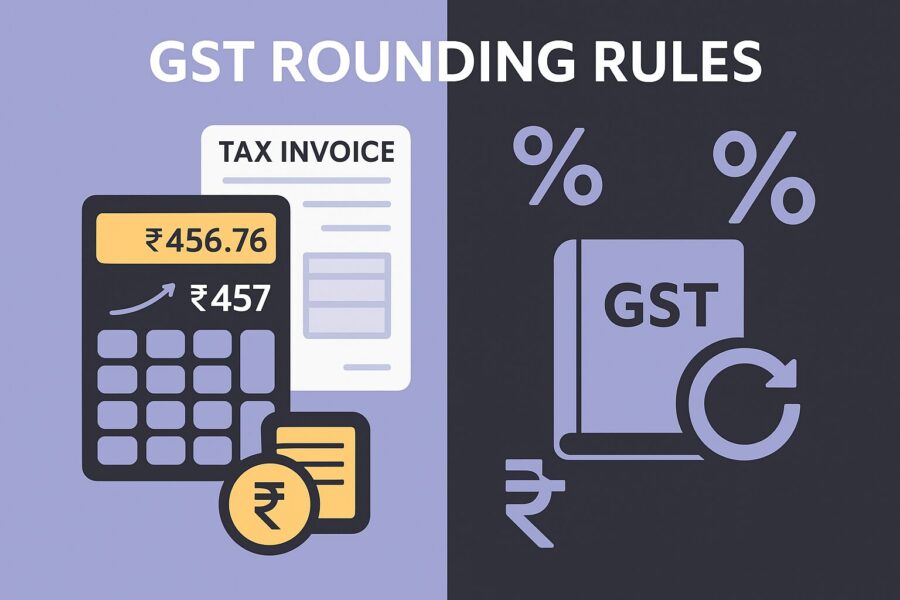
Businesses often run into decimal tax values, leading to a common question: how to deal with these figures?
While many stick to traditional methods like rounding up, rounding down, or using standard rounding, the GST council has its own set of rules for rounding tax amounts. That is why businesses need to understand the right approach. The following segments will first look at the usual tax rounding practices and then dive into the specific GST rounding rules that apply to tax values.
What are the Basic Methods of GST Rounding?
Section 170 of the CGST Act 2017 rounding off of tax is mandatory to bypass penalties and legal issues related to non-compliance with taxation. The authorised signatories perform GST roundoff using the following three primary methods:
Normal Rounding
In this method, the decimal places equal to or more than 0.5 are rounded up by implementing a ‘round half up’ to the nearest whole number. On the other hand, the values less than 0.5 are consequently rounded down. It facilitates balanced rounding and reduces the chance of a bias.
Downward Rounding
This is another popular method where the decimal values are rounded down considering their closest whole number. When a more consistent approach is necessary, this method is frequently used. The calculation must ensure that the rounded value is not greater compared to the initial decimal figure.
For instance, if rounded downwards, a tax liability of ₹678.91 will be calculated as ₹678.
Upward Rounding
It requires rounding the decimal places consistently up to their closest integer. A company can follow this approach if it prefers to be relatively more cautious. It helps ensure that businesses never forget their due tax payable. This method of rounding off tax under GST in India can significantly impact how a business determines and reports tax amounts.
An example of upward rounding is considering a GST amount of ₹1,099.21 as ₹2,000 for ease of calculation.
Understanding Rounding Off Rules in GST Invoices
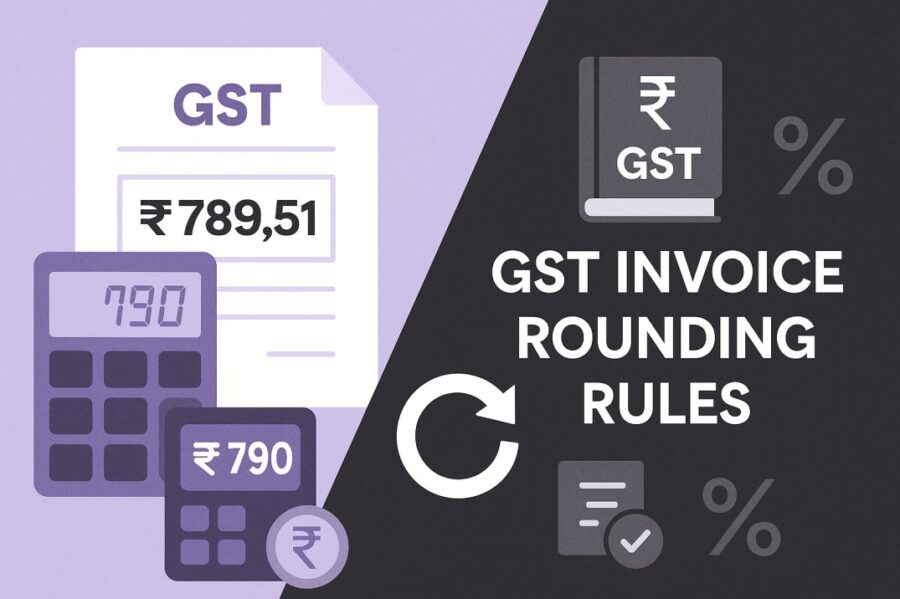
Once you witness a rounding off tax under GST example, you get a fair idea about the correct procedure of rounding. However, a very important question emerges:
Should the business perform a round-off on individual invoices or the overall amount for a tax period as per Section 170?
According to the provisions of this Act, the rounding off tax under GST must happen for each tax invoice as every customer has to bear the GST against a particular bill. Additionally, the rounding off should be executed on each component, i.e., CGST, SGST and IGST, as all of these come together to form the payable tax.
Why is the Normal Rounding Method Preferred for GST Calculations?
The most usual rounding convention is the preferred convention for GST purposes due to its assurance of accuracy, fairness, and conformity with legal standards prescribed under Section 170 of the CGST Act. The following reasons explain why it is preferred:
- Clears Up Calculation Confusion: GST figures often contain decimal points, which could create confusion regarding what is actually payable. Standard GST rules of rounding off address this issue by rounding figures to the nearest Rupee, simplifying matters for taxpayers and authorities alike to work with calculations. For instance, if the calculated tax on an invoice is ₹187.52, under the rounding off tax rule, this would round up to ₹188.
- Encourages Fairness: The normal method rounds up when the fractional part is fifty paise or more and rounds down when it is less, preventing any systematic bias that can arise from always rounding in one direction. This way, neither the taxpayer nor the government gains an unfair advantage over time.
- Minimises Compliance Challenges: Using a standardised method that is legally required, helps avoid discrepancies and potential legal issues or penalties that could come from inconsistent rounding practices.
- Fits with Common Practice: Normal rounding off tax under GST is widely recognised and utilised in business and accounting, making it practical and straightforward to apply.
- Covers All GST Elements: This method applies to tax, interest, penalties, and refunds, ensuring consistency across all GST-related transactions.
In short, normal rounding is preferred because it is simple, fair, and compliant with GST regulations, which helps streamline the total tax administration and payment processes.
Conclusion
Being well versed in the rules of rounding off tax under GST is the prime need of every business. This helps maintain compliance and avoids any legal troubles. By adhering to Section 170, applying the regular rounding practice, and utilising advanced accounting software, companies are able to simplify their tax computation.
These help in maintaining the bills correct and encourage equity in the business pricing process. If tax under GST is rounded off appropriately, it eventually contributes to smoother operations and improved compliance scores for all registered taxpayers.
💡If you want to streamline your payment and make GST payments via credit, debit card or UPI, consider using the PICE App. Explore the PICE App today and take your business to new heights.












